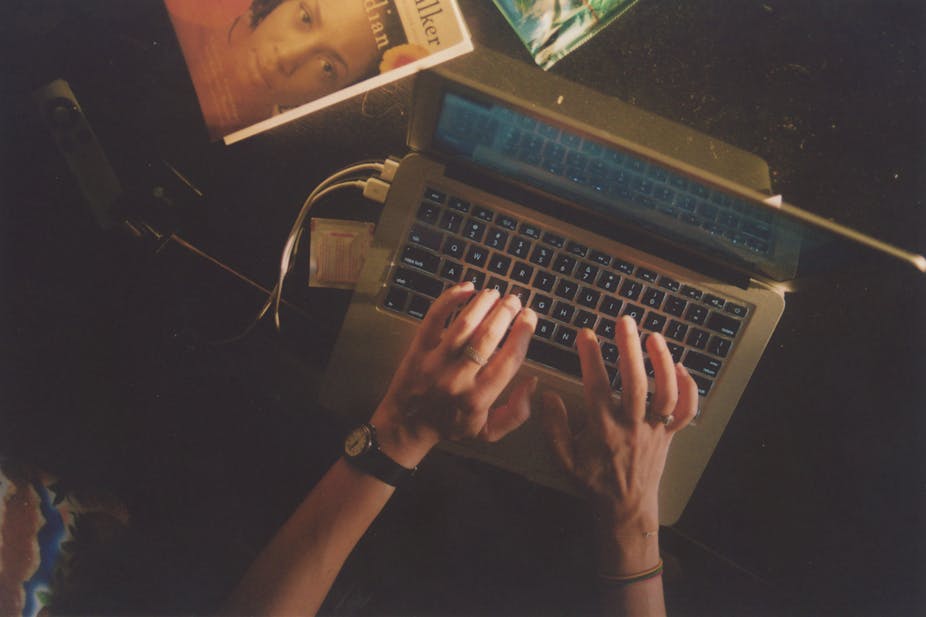Amanda Todd was a 15-year-old Canadian girl who took her own life in October 2012. Prior to her death, she had been the victim of extensive and prolonged cyber-bullying on Facebook, YouTube and other social media platforms and allegedly subject to cyber-extortion.
Her last name has now occasioned the coining of a new, and quite morbid, expression on the web – “todding”. The story is an example of how the lack of consequences for some behaviour online can lead to serious and distressing consequences for others.
“Todding” apparently refers to campaigns of abuse against selected individuals on the web. After being exposed to such campaigns victims (who are often teenagers) may experience stress, depression and anxiety attacks to substance abuse problems. Todd, said she experienced all of these.
Likes won’t save a life
Around a month before she died at her home in British Columbia, Todd posted a video on YouTube entitled My Story: struggling, bullying, suicide, self harm in which she uses cue cards to describe the cyber-bullying she has experienced and her descent into self harm. It ends with an appeal for help.
The video went viral almost immediately and has been viewed more than 8m times. What is important here is that a large number of views – reportedly as many as 1.6m – took place before Todd’s death. By Saturday, October 13, 2012, the day after Todd’s death, the video had more than 9,000 comments. Today there are more than 170,000 comments.
Before Todd’s death, the media had picked up the video, reposted it and attracted a vast number of “likes” as a result. But despite all this coverage, all the “likes”, comments and words of support online, if there was any intervention to help Todd in real life, it appears to have been insufficient to prevent her from taking her own life.
The sheer number of views and comments show our depth of feeling when something as tragic as a teenager’s suicide comes to our attention. Amanda Todd’s attempt to reach the public succeeded in the sense that a great many people apparently witnessed her cry for help. So why did none of our concern translate into offline action?
A neutral act
Views, comments and “likes” often feel like a powerful online currency to the recipient but they are cost neutral in the sense that virtual disapproval doesn’t commit the individual to real intervention.
Since the individual, private user, as well as public media, observe that everybody else is disapproving without committing to intervention, then it becomes legitimate, indeed the norm, to disapprove and sympathise with Amanda Todd in this very way without feeling any pressure to do anything more about it. This is the case even if every individual privately thinks that more should be done.
As a result, we come to subscribe publicly to a norm we might privately find questionable because, as psychologists Krech and Crutchfield suggest, “no one believes, but everyone believes that everyone else believes”.
This is a state of collective belief referred to as pluralistic ignorance in social psychology and it doesn’t get any better while everybody stands on the sidelines watching while the ignorance goes uncontrollably viral. In doing so we aggravate the problem. We personally contribute to the bystander apathy with every supporting “like”.
The same group behaviour could be seen among Todd’s bullies, both before and after her death. Within a day, “R.I.P. Amanda Todd” became a worldwide trend on Twitter and thousands of Facebook users liked a memorial page that was quickly set up. But comments such as “I’m so happy she is dead” and pictures making light of her suffering continued to appear.
The cyber-bullying continued even after Amanda Todd’s death because it is as cost neutral to bully online as it is to sympathise. The cascade mechanisms are the same when based on social proof. New social media can’t block human propensities to do either good or bad deeds but they have an unfortunate ability to reinforce already existing tendencies.
We have long been prone to making irrational choices when acting in a crowd but now that crowd is a faceless, nameless group of millions and we are more removed from the consequences of our behaviour than ever before.
Next time you feel moved to share a video or show your online approval, it’s worth considering if there is something more you could or should do. Otherwise you may just be making things worse.

